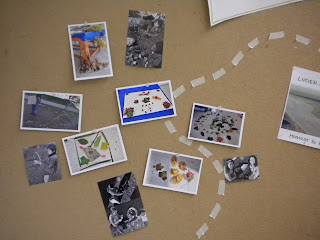 This week we were finishing up our Monsterous Comics and the local comic book artist, Jared Rosello that we introduced for this lesson, came in as a surprise guest! The kids were really excited to talk with Jared about their comics and had a few interesting conversations with him. The kids were eager to hear about how Jared makes his comics and if there is a sequel to his comic that they read. Jared also brought all the students copies of his comic!
This week we were finishing up our Monsterous Comics and the local comic book artist, Jared Rosello that we introduced for this lesson, came in as a surprise guest! The kids were really excited to talk with Jared about their comics and had a few interesting conversations with him. The kids were eager to hear about how Jared makes his comics and if there is a sequel to his comic that they read. Jared also brought all the students copies of his comic!Although this was another work period for our students this week, they were very composed and hard at work. I did a demonstration on what a title page should look like, what a copyright page should include, and what they should include on their author's page. The kids were really excited and before I knew it they were also making a dedication page!

We had to negotiate a little with one of our students since he had worked so hard in class this week. Miss. Erica diligently was working side by side with Max to help him advance his story and to finish his comic this week.
Once the students were came closer to finishing their outlining, I directed the student's attention to the middle of the table where I was going to show them step by step how to bind their comics. It was a process we did together as a class, and it was very successful. Some students had a hard time getting started but then got the hang of it. Bram was actually ver
 y skilled with the book binding technique and was eager to move onto the next step before everyone else was ready!
y skilled with the book binding technique and was eager to move onto the next step before everyone else was ready!Next week's lesson we are still waiting on the Styrofoam heads, but are actively brainstorming for a back up lesson plan.













 their preliminary representations of [Who did it] with great enthusiasm.
their preliminary representations of [Who did it] with great enthusiasm. 




























